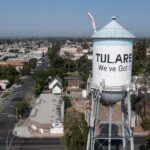There are a number of tasks you need to undertake in order to prepare, list, and sell your home. There is also seemingly a mountain of real estate paperwork that needs to be tracked down, filled out, signed, and processed in order to sell your home quickly and smoothly. Whether you’re selling a home in Buffalo, NY, or a condo in Phoenix, AZ, there are a variety of documents you’ll need along the way.
In this Redfin article, we’ll review the real estate forms you should get ready at each stage in the process of selling your home. Of course, you may need specific paperwork depending on your situation or local laws in your area, so be sure to consult with your real estate agent or attorney during the home selling process.

15 documents to have before listing your home
Collect paperwork that highlights your home’s selling points for an accurate pricing strategy, additional documentation to pass on to the new owners and other real estate forms required for the sale.
Appliance records
Be sure to collect any warranties, manuals, and relevant service records for major appliances that are included with the sale of your home.
Records on upgrades and additions
You’ll want to gather any documentation on relevant repairs, replacements, or other improvements that added value to the house or prolonged its life. For the exterior, that means any documentation for redoing your roof, installing new fiber cement siding or double-paned windows, etc. For the interior, this usually means that you’ve bought new appliances for your kitchen or laundry room, replaced your water heater, or put in new flooring, among other upgrades.
If you added a new bathroom, porch, deck, or accessory dwelling unit (ADU), you’ll want to have the receipts on hand—including permits if they were required. Another update that could add value is landscaping, which could include building a fence, planting trees, or even building a raised garden. Additionally, it’s important to have documentation on any major upgrades to the systems in your house, such as HVAC, water filtration, sprinklers, or security systems.
Any repairs or maintenance that have been part of the normal upkeep of your home and don’t add value for the buyer won’t need any documentation.
Pre-listing home inspection
As the seller, it may be helpful to get an inspection of your home done before selling your home, though in most markets the buyer will pay for a home inspection and most states do not require a pre-listing home inspection. As a seller, a pre-listing home inspection can help you identify defects in your home before you put it on the market. This will allow you time to address anything you want to fix so it doesn’t hold up the selling process. It also puts you in a stronger, more informed position if and when you begin negotiating with the buyer. The buyer will have a harder time asking for a price reduction or other concession if the home inspection they ordered checks out.
Home appraisal
You would have received a professional home appraisal from when you initially purchased your house because your mortgage lender would have required it. If you had any subsequent appraisals performed, such as if you had your home appraised so you could refinance or help you determine a list price, you’ll want to collect those real estate forms as well.
Mortgage and financing documents
You’ll want to put together all your home loan and financing forms you would have received from your mortgage lender. Particularly you’ll need the original purchase agreement and deed. These could also include any home equity loans or lines of credit you may have with your lender.
Deed
You’ll need the deed to your house. If you’ve misplaced your home’s deed, you can get a copy from your county document recorder’s office.
Homeowner’s insurance records
These documents can be helpful if buyers want to get a ballpark idea of the cost to insure the property. But more importantly, it’s a good idea to touch base with your home insurer to make sure you won’t have a gap in coverage between selling your home and buying your next property.
Original sales contract for your house
This real estate document is the original sales contract you made with the previous owner of your property. Though you do not need to have this to sell your house, it could come in handy in case any discrepancies come up with the current sale of your home.
Property survey
Depending on your state, your lender might have required a property survey when you bought the home. Having a current survey is especially important if you have any easements, such as a driveway access easement.
Certificate of occupancy (CO)
The buyer’s mortgage lender may require a certificate of occupancy. If you don’t have a copy on hand, you should be able to get a copy from your city or county permitting office.
Certificates of compliance with building and zoning codes
If you subdivided your property and/or built another dwelling on your parcel of land, legally you would have obtained a certificate of compliance to confirm you were following all local zoning laws. If you don’t have copies on hand, you can request them from your city or county permitting office.
Tax records
These documents can be helpful if buyers want to get a ballpark idea of the cost to insure the property. But more importantly, it’s a good idea to touch base with your home insurer to make sure you won’t have a gap in coverage between selling your home and buying your next property.
Preliminary title report
You’ll want to find your original title report. It will show if anyone else, other than yourself, had a legal claim to your property at the time of purchase. The homebuyer will still have a title company perform a preliminary title report as part of the home selling process. However, it’s still a good idea to have your original on hand in case any discrepancies come up.
Termite or pest inspection
Not every state requires a pest inspection in order to sell your home. However, if you live in a state that does, or if your pre-listing home inspection turns up some pest activity, then you’ll want to make sure to get a pest inspection scheduled and passed so you have the documentation to prove your house is ready to sell.
Additional documents for properties with HOAs
If the home you’re selling is currently part of an HOA, you may have additional real estate paperwork to gather, which could include:
- Covenants, Conditions, and Restrictions (CC&Rs)
- Bylaws, rules, and regulations
- Special restrictions
- Recent association meeting notes, financial statements, and budgets
- The amount and use of monthly association and maintenance fees
- Current and planned special assessments against the property
- Certification that any major improvements you made to your home were approved by the association
- Current and planned special assessments against the property
- The association’s master insurance policy

4 documents you need when it’s time to list your home
At this stage, you’ll work closely with your agent to put a listing agreement in place and get your home listed for sale.
Listing agreement
The listing agreement is the contract between you and your real estate agent. It covers the responsibilities you and your agent agree to for the sale of your house, the duration of the agreement, how much their commission on the sale will be, and how they’re going to market the house.
Market analysis and marketing materials for your house
Your agent typically generates these for you and can include a comparative market analysis (CMA), comps in your area, and flyers, among others.
Mutual easement agreements
Your property may have an easement such as utility easements, conservation easements, shared driveway easements, etc. You’ll want to share any documentation you have or agreements made for any easements on your property.
Leased equipment
You may have equipment that’s located on your property that you lease from a service provider, such as a propane tank or solar panels.

2 documents you need while your home is for sale
In a seller’s market, the house might be available for only a short time before it goes pending. Make sure that you have everything organized and ready shortly after you list the property.
Statutory disclosure forms
Each state has its own version of a statutory disclosure form. You’ll fill it out disclose any meaningful defects of your house to the buyer before the purchase agreement is signed.
Many of the disclosure form questions can be answered from the home inspection report from when you bought the house. If you do know of a defect that could be a determining factor to the buyer before signing the agreement, you must be honest about it or you could be exposing yourself to legal issues after the sale. If you have concerns about this, make sure to discuss them with your agent or real estate attorney.
Statutory disclosure forms should be ready before or right after you list your home. Typically, states require delivery of the required forms to the buyer before the purchase agreement is signed, and give the buyer three days to review and respond. In some states, the law or purchase contract says if a seller doesn’t provide a prospective buyer with the disclosure statement, the buyer has a right to cancel the sale agreement. A few examples of statutory disclosure forms by state:
Washington: In Washington state, you’ll need the “Washington Disclosure Statement,” which covers the water source for your house, the public sewer or if your house has a septic system, structural components like the foundation, systems, fixtures, common interests (including HOAs), and environmental factors.
California: California’s disclosure form is called “The Real Estate Transfer Disclosure Statement (TDS).” The TDS must be given to a prospective buyer before the transfer of title, and before the execution of the sales contract. It covers appliances and fixtures, septic tank or public sewer system, water supply, structural components, environmental hazards, neighborhood noise problems or other nuisances (something other states don’t include), lawsuits by or against the seller, HOA and CC&Rs, and more. California also requires a “Natural Hazard Disclosure Statement (NHDS),” a separate form that discloses potential hazards from six types of zones, including floods, fire, and earthquakes.
New York: The disclosure is called the “Property Condition Disclosure Act.” The questions on this form ask about possible claims to the property; environmental issues regarding hazardous or toxic substances, structural aspects like pests, roofing, and structural systems, and mechanical systems and services like water and electricity. In New York, if you don’t deliver the disclosure to the buyer, they receive $500 against the agreed-upon purchase price.
Seller’s disclosure on lead-based paint and/or lead-based paint hazards
Lead-based paint may not be anyone’s favorite topic to discuss, but if you’re selling an older home, you may have additional disclosure obligations. Approximately three-quarters of the nation’s housing built before 1978 contains some lead-based paint.
Along with the Seller’s Disclosure of Information above, you’ll need to give buyers a pamphlet prepared by the Environmental Protection Agency (EPA) called Protect Your Family from Lead in Your Home. This pamphlet provides important information for families and homeowners to help them identify when lead-based paint is likely to be a hazard and how to get their home checked.

5 documents when you accept an offer
Once you’ve decided which buyer’s offer to accept, it’s time to finalize the terms and prepare for closing. Your agent and title company will help you with the following:
Purchase offer
This document will be submitted to you by buyers and outlines their offer on your house along with any contingencies. You may also receive multiple offers, so it’s best to take your time and review each one carefully to make sure you’re accepting the best one. It may end up not being the highest bid.
Final purchase and sale agreement
The purchase and sale agreement (P&S) includes details about your title, and includes an agreement that you will provide a clear title to the home for the buyer.
Affidavit of title
This notarized document is provided by you the seller and which states any legal issues your property may be involved in, among other things.
Transfer tax declarations
This is a declaration that discloses the purchase price and calculates the tax.
Estimated closing statement
This estimate is a statement you’ll receive from your escrow officer after the final terms of the offer have been settled, but before closing is finalized. The statement should provide you an estimate of your home sale proceeds. This is an opportunity to verify all charges, taxes, credits, and commissions are properly reflected.

8 documents you need on closing day
Here are some of the forms you’ll likely be signing or receiving on closing day:
Deed to the home and other transfer documents
You may be able to pre-sign the deed and other transfer documents. If not, you will sign these at closing.
Release of mortgage lien
Shortly after receiving full payment of your outstanding mortgage loan, your lender should give you a release of the mortgage lien, which may also be called a reconveyance. The lender may send the original to the escrow company or to the county recorder. Make sure the release is recorded correctly and that you get a copy of it for your files. If you had a second mortgage, home equity loan, or HELOC, be sure to get copies of the recorded releases for those loans as well.
Riders to the purchase and sale agreement
These are attachments or addenda to the P&S that cover any request that the buyer or seller negotiated during the sales process. This could be an agreement to leave certain appliances or pieces of furniture with the home, or an agreement to pay part of the other party’s closing costs.
Title report
When you originally purchased your home, you had a title report. Now that you’re selling, you’ll need a new title report, required for the sale of your property. It outlines the legal status of your home in regards to ownership. This report typically includes tax information, property value, and information on zoning laws.
Title insurance
As the seller, you will usually pay for the buyer’s Owner’s Title Insurance Policy. This is typically one of your closing costs but can be negotiated
Leasing agreement
If you’re currently renting the property, you will have to supply the current lease agreement.
Warranty and maintenance receipts
Make sure to collect all warranty paperwork and details on major home improvement projects. Keep any receipts for maintenance and replacements of the roof, furnace, hot water heater, HVAC, and other major appliances.
Bill of sale

6 real estate forms to keep after closing
Now that you’ve completed the closing process, save the most important documents from the transaction:
Purchase and sale agreements
In case any issues arise down the road, having the purchase and sale agreement to refer back to is important.
Copy of recorded deed or other real property transfer document
Be sure to double check your home deed was recorded in land records.
Copy of recorded releases for all mortgages and home equity loans
As long as you have a mortgage loan, it’s important to hold onto these.
Receipts for any property taxes paid with the closing proceeds
Be sure to keep the receipts for property taxes paid at time of closing. Typically, both the buyer and the seller pay property taxes at a prorated amount at closing.
Any tax forms that you received pertaining to the sale
Hold onto tax forms to prove you are eligible for the tax deductions you took.
Records of major improvements to your home
You should keep these records for at least three years after you file your tax returns for the year of the sale.
























